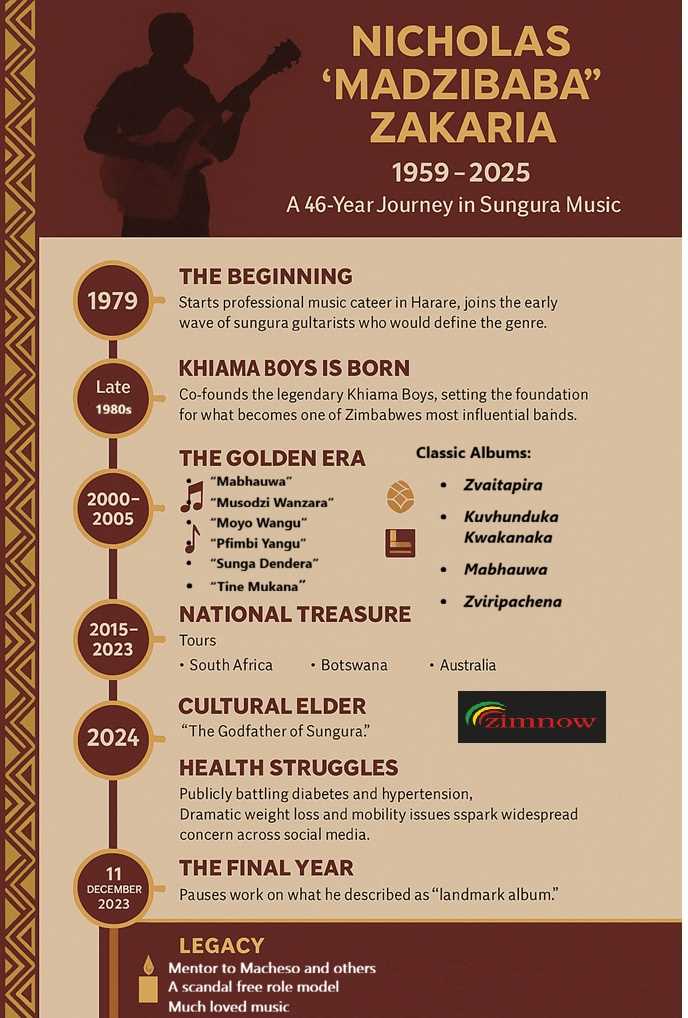
Arthur Choga
Back in the 1980s, there was an established order of items in the average black high density living room.
There was a display cabinet where mother kept her fine chinaware which was only accessed on special day, and never by the children.
There was the room divider, which generally did not divide any rooms but was backed against a wall and was the entertainment centre. On it, sat the television, often a cubic device which many young people today would struggle to identify as a TV. Even more importantly, usually above the TV sat the family hi-fi.
For those born later on, the hi-fi or stereo was a radio device that he family listened in to and played music on.
Hi-fis developed from the old Tempest and Supersonic favourites at Independence which featured much carpentry and had huge speakers, some of which were padded so you could actually sit on them when you put the speakers on the verandah and played your favourite records.
Records were circular (mostly black musical storage devices which were played on the hi-fi by way of a needle which plucked the sound off the record and relayed it to the speakers. This sounds like ancient history.
In time, the cassette player came along and the hi-fi had to change to incorporate this new device. Devices now featured cassette players and you could record music off the radio or record yourself fooling around or auditioning. Many of the great musical bands got their big break by recording themselves and sending a “demo tape” to record companies. Whenever you hear someone talk about a mixtape- it originated in this era when one would put together a selection of tracks, usually for hopelessly romantic purposes.
In 1979, Japanese electronics giant Sony invented the Walkman, a cutting edge development that allowed you to play cassettes on the go. Walkman made it to Zimbabwe in the later 1980s and became quite the status symbol. The downside was you always had to have money for batteries as these wore out pretty quickly.
In order to minimise battery usage young people came up with the idea of rewinding using a pen. Eversharp, the local pen was particularly effective at this task and people developed strong wrists in this era.
This era is also the genesis of music piracy, as we hunkered over our twin deck radios with our fingers over the “record” button waiting for our favourite track to play. We didn’t think we were doing any harm. After all, pirates are those wicked men (and women) who drink rum, wear eye patches, shout “Yo ho ho” and kill anyone and anything as they hunt for treasure marked with an X on some secret maps.
In 1982 Sony (these guys, again!) and Dutch electronics firm Philips developed the compact disc, which allowed music (and other things) to be stored on a shiny circular plastic disc. The CD was born and radios moved into the CD era. Crackle free music was the selling point and soon radios featured CD players. The completion grew. Soon they featured 3-CD changers and 5-CD changers and cars had 24-CD shuttles tucked into boots and under seats. Sony created the Discman which allowed you to play discs on the go.
Related Stories
Soon music moved into MP3 players and large amounts of music could be loaded into a variety of devices.
In 2001 American computer giant Apple released the iPod. While it has been discontinued now, after selling nearly half a billion devices, it opened the way for the death of the stereo as we knew it.
I remember one treasured device I had. It was a hi-fi system made by a Chinese company called Gelin. It featured a turntable for the records, a twin CD deck and a CD player. I loved it to bits. I played it to death. Eventually it gave up the fight. There must have been so much happening inside it as it blended all these technologies together. From that moment, I had a deep respect for Chinese technology.
Back to the iPod. Now you could load copious amounts of music on a single device and play it at your will. You no longer relied on the DJs on radio to play your favourite songs.
Clone devices rolled out.
Computer storage moved from the old floppy disc, which was neither floppy nor a disc in the true sense of the word. Easily corrupted and notoriously difficult to store, this soon paved way for the USB flash drive.
This device planted 20centimetre nails in the Hi-fi’s coffin and sealed it.
Nowadays when you walk into most living rooms, there is no radio.
The TV now plays music off flash drives or through Bluetooth and other connections linking it to the cellphone and multiple devices.
The demise of the hi-fi and its disappearance from homes is a warning for the television. Even as it evolves into Smart TV and connected home centres, its original purpose – television programming is in ICU and some family members are muttering about switching off the life support machines.
To be continued.




















Leave Comments